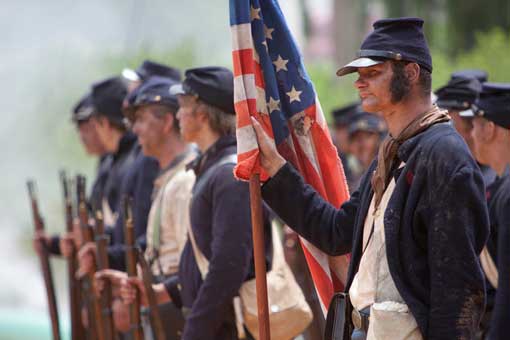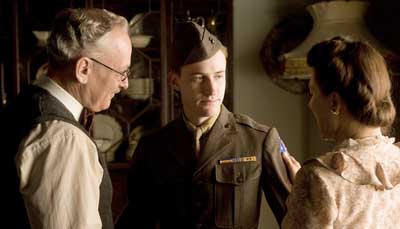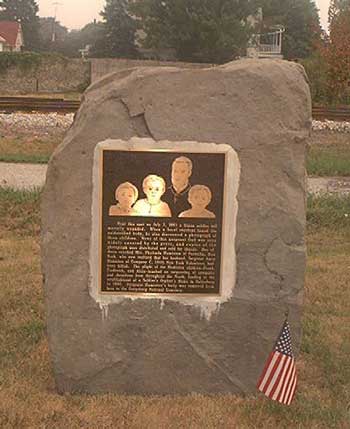
ReelLifeWithJane.com
I admit I'm not really into TV shows and movies focused on war. Up to this point in my life, most of my war viewing has been limited to things like Father Goose, the 1964 movie starring Cary Grant as an aircraft spotter on an isolated island during WW2. But I didn't watch it for the war component. I watched it for his budding relationship with Leslie Caron.
When cable TV came into the house, my husband started watching every war documentary, movie and special across the dial. Then my son grew into a teenager and developed the same fascination with war. Maybe it's a guy thing. Maybe I feel things too deeply and get too heartbroken over watching peoples' lives shattered by war.
Most of the shows my husband and son watch aren't romanticized depictions of these events. You see the real people behind the battles -- aging gunners recalling tense moments in the ball turret of a B17, retired officers mapping out their D-Day strategies, and graying soldiers describing the horror of watching a buddy die in a foxhole.
Ironically, these personal stories are exactly why I stopped walking by the living room and sat down on the couch to watch. I wouldn't say I'm transfixed like the guys. I don't analyze all the strategies, artillery and major players. But these shows are helping me to understand how wars have shaped our world.

Then came The Pacific, Tom Hanks' and Steven Spielberg's super-realistic miniseries that aired on HBO last year. My husband and son started watching it, and then I started watching it and became completely addicted. We watched the entire series nonstop over the course of a weekend.
My obsession stemmed not from the war itself, but from the relationships of the soldiers, their friends and families. It wasn't an easy thing to watch. The carnage and death on Peleliu was depressing enough, but I wept when Sledge returned home with the sadness and desperation on his face that his father so hated seeing. He knew his son would never fully recover from it. If the series could have been summed up in one scene, that would have been it.
Last week, we watched a screener for Gettysburg, a two-hour documentary narrated by Sam Rockwell, premiering on the History channel for Memorial Day (Monday at 9 p.m. ET). Produced by Ridley Scott and Tony Scott, it's a compelling, CGI-enhanced look at the brutal battle that served as a turning point in the Civil War, which marks its 150th anniversary this year.
It's staggering to think that 50,000 people were killed over the course of three days in a small farm town in Pennsylvania. In today's terms, that would translate to millions of deaths right here on our own soil.

The story revolves around Amos Humiston, a 33-year-old "unknown soldier" killed on July 1, 1863. His body was found with nothing to identify him except a precious ambrotype (portraits) of his three children clutched tightly in his hand. Had it not been for the efforts of Dr. John Francis Bourns, who took it upon himself to send a description of the photo to newspapers around the country, Humiston would have faded into obscurity. But once the article reached his wife, she recognized the description and sadly confirmed that she was his widow.
Shows like The Pacific and Gettysburg open a portal into the past to bring these wars home to us in a real way. And who knows? Maybe I'll get to a point where I don't need to have my son explain how a howitzer works or what took place at Vicksburg in 1863. Then again, I kind of like that.
--------
Here's a peek at Gettysburg:
And check out Jane's recent story on the HBO documentary Burma Soldier at ReelLifeWithJane.com.